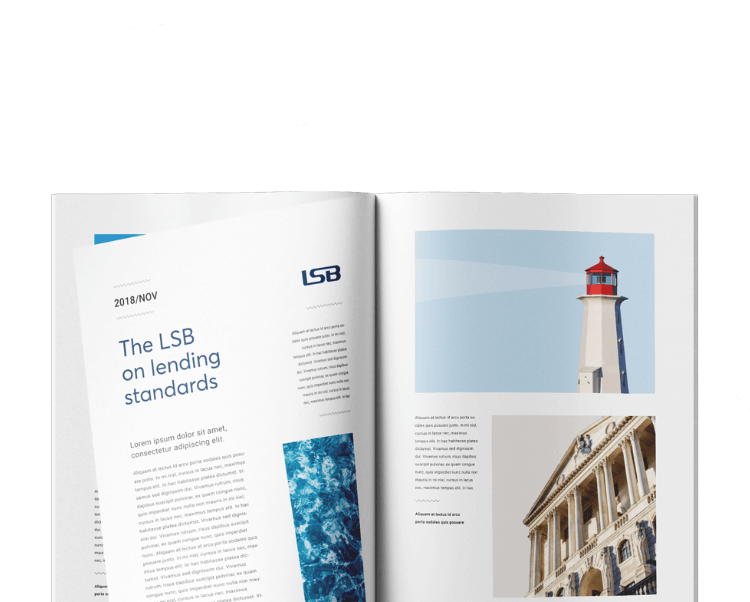Introduction
Registered firms will be aware of the various ways of identifying if a customer could be displaying signs of financial difficulty. These vary from clear triggers such as missing a payment or entering an unauthorised overdraft to more subtle indicators such as multiple gambling transactions or accessing high-cost short-term credit. However, are there triggers that could be missed because of their everyday nature, even ones as normal as spending money in a high-street shop or supermarket?
In 2018, the Adult Financial Capability Survey showed an estimated 9 million adults often use credit for food and bills.[1] It is possible this figure has increased since the time this research was conducted, in part because of how coronavirus has adversely impacted the finances of many households. Research commissioned and funded by the Money and Pensions Service has since taken a closer look at those adults using credit for food and bills. The piece[2], completed by the University of Bristol and published in late 2020, is worthy of consideration by firms looking to understand customer behaviour when it comes to credit usage, particularly in relation to financial difficulties.
Credit by necessity
Using credit to pay for essential spending (as a result of necessity rather than choice) is not a desirable outcome for either the customer or lender. The customer may end up paying fees or interest to buy necessities and the firm will be lending to a customer who is already facing financial difficulties. Using credit in this manner is also likely to be unsustainable as customers may not be in a position to pay the debt down in the near future. However, despite using credit for essentials being a potential sign of financial difficulties, there are challenges for firms in identifying these customers. This is because the behaviour appears similar to other customers standard ‘healthy’ credit usage.
Credit by choice
Many customers choose to use credit to make essential purchases despite having available debit funds. For example, some customers use credit cards for points or other benefits that can be accrued, before paying off the balance in full. Others may want to take advantage of protections that credit cards offer rather than using a debit card. These commonplace instances show why having a flag or similar on transactions conducted at, for example, major retailers, could be unworkable. Such a flag could end up highlighting a large number of customers using credit by choice rather than identifying those in difficulty.
So what can firms do? The most likely route to successfully supporting customers in difficulty is to be aware of potential signs and proactive in customer engagement. Data analysis may also be valuable to highlight areas of risk relating to credit usage. Finally, considering customer communications can increase the likelihood of customers in difficulty self-reporting to the firm.
Customer engagement
We know that using credit to buy essential goods cannot necessarily be used as a sign for further action. This is also true of potential triggers such as gambling transactions. Alone they may not signify a problem that needs addressing but when considered with other factors it may prompt the need for further engagement.
It could be valuable for firms to consider whether using credit for essential spending is currently used as a potential sign of difficulty. Educating staff or financial difficulties teams on how some customers end up using credit could also help promote good conversations. To illustrate this, let us look at a customer who is contacted due to going overdrawn on their account. During the contact, the customer explains it is a temporary issue and should be resolved soon. However, if recent transactions show expenses in supermarkets or on utility bills, it would be worth the agent asking if the customer was finding it difficult to budget or had any other challenges they could assist with.
Confident conversations
During our work engaging with registered firms, we have heard examples of agents being worried to ask such questions because the customer may not be in any difficulty but choosing to use their card or credit in that way. To create an example, perhaps a customer is using their credit card for shopping and is near its maximum. However, this is a choice and the customer is not in difficulty and is due to pay off the balance in the next month or so. Could asking the customer about potential difficulties be awkward or even irritate the customer? Similar concerns are sometimes raised when we discuss questioning gambling transactions – do not millions of people safely gamble? Therefore, would asking questions about it just annoy those who do not have a problem?
In both these situations, the key is to balance the questioning with the situation and to have staff who openly engage with customers and use active listening skills. When there is already a potential sign of difficulty, for example, a missed payment or overdrawn account, then it is clearly appropriate to engage with a customer to better understand their situation. It may be that the customer’s response makes sense and no further probing is required. When this occurs, it does not mean that the initial questioning was unnecessary. Rather, the adviser has given themselves confidence that the customer is in a good situation. They may also have reassured the customer that the firm cares and can be engaged with should future difficulties occur.
Insight through data
Alongside the questioning on the first line, it could be worth firms considering if there are ways of analysing credit usage to identify if customers are using it in an unsustainable way. This could be achieved by a variety of methods including looking at accounts that have gone into financial difficulty and reviewing whether there were missed opportunities for early identification. It could be interesting to review how accounts were used during the build up to entering financial difficulties. For example, analysis could show that an increased use of credit on essential spending was common before missing a payment. In turn, this could demonstrate that questioning such use on the first line may help identify potential difficulties before they crystallise.
By looking for patterns of behaviour in those customers who enter financial difficulty, firms can gather insight that helps pro-actively identify customers in the future. Data analysis may also show what does not work. For example, if the use of credit before entering difficulties is no different from a ‘healthy’ account, then firms may need to consider other ways to find those in pre-arrears.
Customer communications
There are a number of options available to a firm when helping customers in pre-arrears or facing financial difficulty. These can include setting up payment holidays, interest freezes, putting in place payment plans or other forbearance measures. An important aspect of the support firms can offer is non-financial, for example, signposting to third-party organisations with specialisms in helping customers through specific challenges.
Many customers will be unaware of the support that firms can offer those in difficulty. Instead, customers may feel that if a firm discovers they are in financial difficulty then the outcome will be detrimental. For example, customers may be concerned that a credit facility such as an overdraft will be removed or that their credit rating will be severely impacted. Firms need to tackle these misunderstandings by promoting the support available and the value of self-disclosure.
This promotion can be achieved by using customer communications to highlight the importance of informing a firm if the customer enters difficulties or requires any assistance. This should relate to both financial difficulties and any other support they may need, for example, about a potential vulnerability or other access challenge.
These communications may include material that is provided throughout the different stages of the journey, from the point of sale, through to the account maintenance stage (such as on account statements). Websites, apps, or other portals can also be used to provide information raising the importance of early disclosure.
Firms can increase knowledge about the importance of self-disclosure by educating customers on what can be done to assist them. This could include, for example, explaining at a high-level some of the potential forbearance measures that could be offered depending on the customer’s situation. By considering the best media and channels to deliver such education, for example, by using videos or other multi-media rather than just text-based information, firms can further promote the value to customers of raising difficulties early.
As customers and their finances continue to be affected by coronavirus and the steps taken to counter it, registered firms require effective methods to identify and assist those in difficulty. By looking at the use of credit on essential spending, firms can consider whether they are currently utilising first line engagement and credit analysis in the best way possible. Through staff education on the use of credit and raising customer awareness about the value of self-disclosure, firms can also increase the likelihood of early and successful engagement with those in difficulty.
If there is any way that the LSB can assist you or your firm, or if you want to discuss anything within this piece, please contact us at insight@lstdb.org.uk or using the details below.
Contact details
Anna Roughley – Head of Insight & Support
annaroughley@lstdb.org.uk – 07392 867 176
Harry Hughes – Senior Insight & Support Manager
harryhughes@lstdb.org.uk – 07387 108 498
[1] Finney, Andrea, Analysis of the Credit Counts National Strategy Measure
[2] Finney, Andrea, Why Adults Regularly Use Credit for Food and Bills
Download a copy of this thought piece here.





